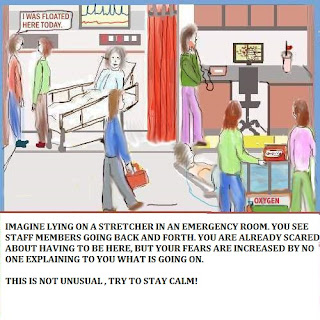IDENTIFYING ARDS IN THE ICU TRAUMA PATIENT
.JPG) Updated 9/25
Updated 9/25Scenario: The image above shows a patient in the ICU,
who was involved in a car accident. The vital signs shown
on the monitor, is an indication that something is wrong.
who was involved in a car accident. The vital signs shown
on the monitor, is an indication that something is wrong.
His heart rate is rapid, respirations are rapid and oxygen
saturation is decreasing. This patient may be displaying
the early signs of ARDS.
It would be important for the nurse to document her findings
and notify the doctor for more intervention like lab values and
a chest x-ray. The patient's progress should also be reflected in
the Care plan.
saturation is decreasing. This patient may be displaying
the early signs of ARDS.
It would be important for the nurse to document her findings
and notify the doctor for more intervention like lab values and
a chest x-ray. The patient's progress should also be reflected in
the Care plan.
IDENTIFYING ARDS

Learn more about : Sepsis

Learn more about: Emergency Room for the layperson
This complex illness, may be triggered by a number of conditions.
Causes include, but are not confined to:
- pneumonia , near drowning
Causes include, but are not confined to:
- pneumonia , near drowning
- massive blood transfusions
- pancreatitis, trauma, sepsis
In Adult Respiratory Distress Syndrome ( ARDS),
the lung tissue becomes very stiff and oxygenation
is difficult. The air sacs ( alveoli) typically, fill with
fluid and white patches are seen on X-Ray.
is difficult. The air sacs ( alveoli) typically, fill with
fluid and white patches are seen on X-Ray.
Learn more about : ARDS, DVT and PE
The term"white out" is sometimes used to describe
the damaged lungs. Mechanical ventilation becomes
necessary, to assist with the workload of breathing.
tissue becomes difficult.
Learn more about: The patient on mechanical ventilation

Learn more about : Sepsis

Learn more about: Emergency Room for the layperson


0 Comments:
Post a Comment
<< Home